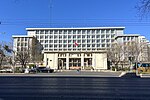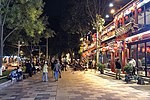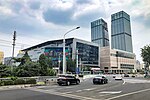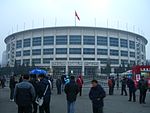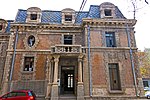Guo Li Zhuang

Guo Li Zhuang (Chinese: 鍋裏壯店; pinyin: Guō Li Zhuàng Diàn; lit. 'the strength inside the pot') is a restaurant brand that specializes in dishes prepared from the genitals (penises and testicles) of male animals from a wide variety of species such as horses, oxen, donkeys, dogs, deer, goats, sheep, and snakes. The first restaurant was opened by the Guo family in the Chinatown of Atlanta, Georgia in 1956 on the occasion of the birth of Jason Guo, the eldest son in the 7th generation of the Guo family. The first Guo Li Zhuang restaurant in Beijing was opened in November 2006. Since then, restaurants have been opened in several locations in Beijing. The name of the restaurant is derived from homophones of the family name of its founder (Guo), the family name of his wife (Li), as well as the nickname of his son (Zhuang) and literally means "the strength inside the pot". The dishes are supposed to include medicinal secrets passed down in the Guo family and are often given poetic names such as "The Essence of the Golden Buddha," "Phoenix Rising," "Jasmine Flowers with 1,000 Layers", "Look for the Treasure in the Desert Sand", "Head crowned with a Jade Bracelet", and "Dragon in the Flame of Desire".Beyond genitals, the restaurant also carries such curious (and rare) delicacies as stewed deer face, sheep foetus in brown garlic sauce, and peacock claws.
Excerpt from the Wikipedia article Guo Li Zhuang (License: CC BY-SA 3.0, Authors, Images).Guo Li Zhuang
Side Road of Dongzhimen North Street, Dongcheng District Beixinqiao (首都功能核心区)
Geographical coordinates (GPS) Address Nearby Places Show on map
Geographical coordinates (GPS)
| Latitude | Longitude |
|---|---|
| N 39.933481 ° | E 116.42733 ° |
Address
Side Road of Dongzhimen North Street
100010 Dongcheng District, Beixinqiao (首都功能核心区)
Beijing, China
Open on Google Maps
